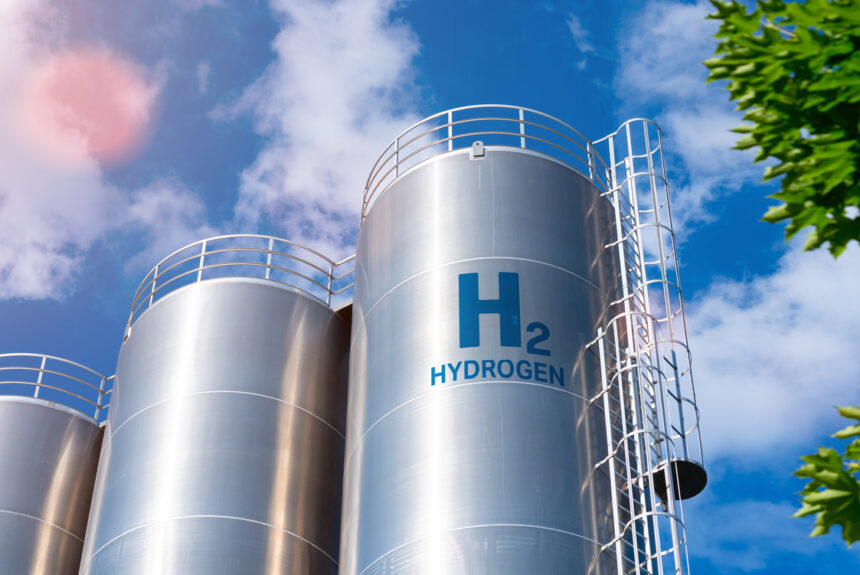The Department of Energy recently announced $7 billion in funding to kickstart clean hydrogen production in the United States. Appropriated in the Infrastructure Investment and Jobs Act, the money will go to seven different Regional Clean Hydrogen Hubs (H2Hubs). Collectively, the hubs will produce three million metric tons of clean hydrogen annually, a third of the Biden administration’s goal of 10 million tons of clean hydrogen by 2030. The U.S. currently makes 10 million tons of hydrogen per year—95 percent of which is made from carbon-intensive sources. Together these H2Hubs will help to lower the green premium of carbon-free hydrogen fuel, encourage private sector investment, and help reduce emissions in hard to decarbonize sectors.
The seven H2Hubs are:
- Appalachian Hydrogen Hub in West Virginia, Ohio, and Pennsylvania will produce low-cost hydrogen with emissions-captured natural gas and will be led by Battelle. This Hub is funded up to $925 million and will support 21,000 direct jobs;
- Gulf Coast Hydrogen Hub in Texas which will leverage natural gas with carbon capture and abundant renewable energy to create carbon-free hydrogen fuel. The Gulf Coast Hub will be led by HyVelocity—an industry consortium that includes Air Liquide, ExxonMobil, and Chevron—and is expected to create 45,000 direct jobs;
- Midwest Hydrogen Hub will look to decarbonize the industrial and transportation sectors in Illinois, Indiana, and Michigan by producing clean hydrogen with renewable energy, nuclear power, and carbon capture natural gas. With available federal funding of up to $1 billion, this Hub is expected to generate nearly 14,000 direct jobs;
- California Hydrogen Hub, which will be led by Alliance for Renewable Clean Hydrogen Energy Systems, will be eligible for up to $1.2 billion in DOE funding and will utilize renewables and biomass to create hydrogen to target public transportation, port operations, and heavy-duty trucking;
- Heartland Hydrogen Hub, located in Minnesota and the Dakotas, the Heartland Hub will work with farmers and the private sector to decarbonize fertilizer production and advance the use of clean hydrogen in electric generation and for cold climate space heating. Supporting 3,880 jobs, this hub will be eligible for $925 million in federal funding;
- Mid-Atlantic Hydrogen Hub, will leverage renewable, nuclear, and natural gas infrastructure in Pennsylvania, New Jersey, and Delaware to produce clean hydrogen. In addition to creating nearly 21,000 jobs directly, the Hub will also provide $14 million for workforce development development in the region; and
- Pacific Northwest Hydrogen Hub, will be eligible for up to $1 billion in funding and will work in Washington, Oregon, and Montana to accelerate hydrogen production via renewable-powered electrolysis.
DOE’s funding announcement comes on the heels of an impressive year for clean hydrogen. Recently, Electric Hydrogen reached $1 billion in total funding for its novel large-scale electrolyzer design which the company hopes will drive down the cost of hydrogen production. Earlier this year FuelCell Energy and Toyota deployed the world’s first tri-gen system in California which converts agricultural waste into clean hydrogen, water, and electricity. Meanwhile, geologists and energy companies are looking to tap underground hydrogen produced by naturally occurring chemical reactions between iron-rich minerals in the earth’s crust.
The energy industry is also waiting on a final decision from the U.S. Treasury concerning the implementation of the 45V tax credit, which was created through the Inflation Reduction Act. 45V will designate up to $3 per kilogram of hydrogen produced to companies, depending on the carbon intensity of the production. Some stakeholders are asking the Treasury to implement strict electricity accounting standards to ensure that full benefits of the tax credit are awarded to entities that only use carbon-free power to generate hydrogen. Others are lobbying for a more flexible standard that will allow the hydrogen industry to scale first, reduce costs, and address emissions reductions later.
>>>READ: Is An Underground Hydrogen Boom Coming?
Whatever the Treasury decides will have a large impact on the scalability of American clean hydrogen production. With that in mind, regulators should consider ways to adopt as much of a technology-neutral approach as possible. With broad flexibility, the market will be able to more quickly respond and develop lower-carbon technologies. At the same time, policymakers should provide strong oversight of these hydrogen hubs to ensure that taxpayer funds are being spent efficiently.
The Department of Energy’s funding announcement is a great example of public-private partnerships working together to accelerate innovation. Together the Regional Hydrogen Hubs will further America’s hydrogen industry and benefit consumers and the environment.
The views and opinions expressed are those of the author’s and do not necessarily reflect the official policy or position of C3.
